After months or even years of dryness, when the skies finally open and rare rains sweep across arid landscapes, something magical happens: desert depressions fill with water, becoming ephemeral desert pools—temporary oases that host a surge of life. These pools last only days or weeks, but during that time they become bustling stages for ephemeral desert pool wildlife.
From migrating birds that fly in from hundreds of kilometers away, to frogs that spawn en masse, to insects that hatch within hours, these transient places hold a story of life’s resilience. In this guide, we explore seven of the most extraordinary places where you can witness this phenomenon, how these ecosystems work, how to observe them responsibly, and what threats they face.
🔍 What Are Ephemeral Desert Pools & Why Wildlife Depends on Them
Definition & Mechanics
- What is an ephemeral desert pool?
It’s a shallow depression or natural basin in arid or semi-arid landscapes that fills with water after rainfall events. These pools have no permanent inflow and typically evaporate or drain away, often disappearing quite rapidly. - Formation process:
Rainfall (sometimes flash floods) fills natural basins or claypan depressions. Soil type (clay, compacted earth), topography (flat lowlands), and impermeable substrate help trap water. - Duration & variability:
Many pools last from a few days to a few weeks. Their existence depends on amount of rainfall, temperature (for evaporation), substrate permeability, and sometimes inlet/outlet drainage.
Ecological Importance
- Breeding grounds for amphibians: desert frogs and toads (some species have eggs that hatch within 24-48 hours).
- Habitat for migratory birds: waterfowl, shorebirds, sometimes flamingos or plovers depending on geography.
- Insect boom: mosquitoes, dragonflies, mayflies that hatch, mate, lay next generation before water disappears.
- Temporary flora: aquatic algae, pupae, plants adapted to rapid life cycles.
- Food chain trigger: predator birds, mammals and reptiles drawn in to feed on insects, amphibians.
🏜️ 7 Ephemeral Desert Pool Wildlife Hotspots
Here are seven of the most remarkable locations around the world where ephemeral desert pool wildlife is especially rich and spectacular.
1. Central Australia – Simpson Desert Claypans
The Simpson Desert in central Australia is famed for its vast red dunes, but interspersed are claypans—flat, hard crusted shallow basins that after rainfall become shimmering pools.
What appears:
- Ephemeral frogs (genus Heleioporus, Litoria) emerge to breed.
- Migratory waterbirds, including stilts and waterfowl, descend during wet seasons.
- Algae blooms and crustaceans like Triops (tadpole shrimp) often hatch.
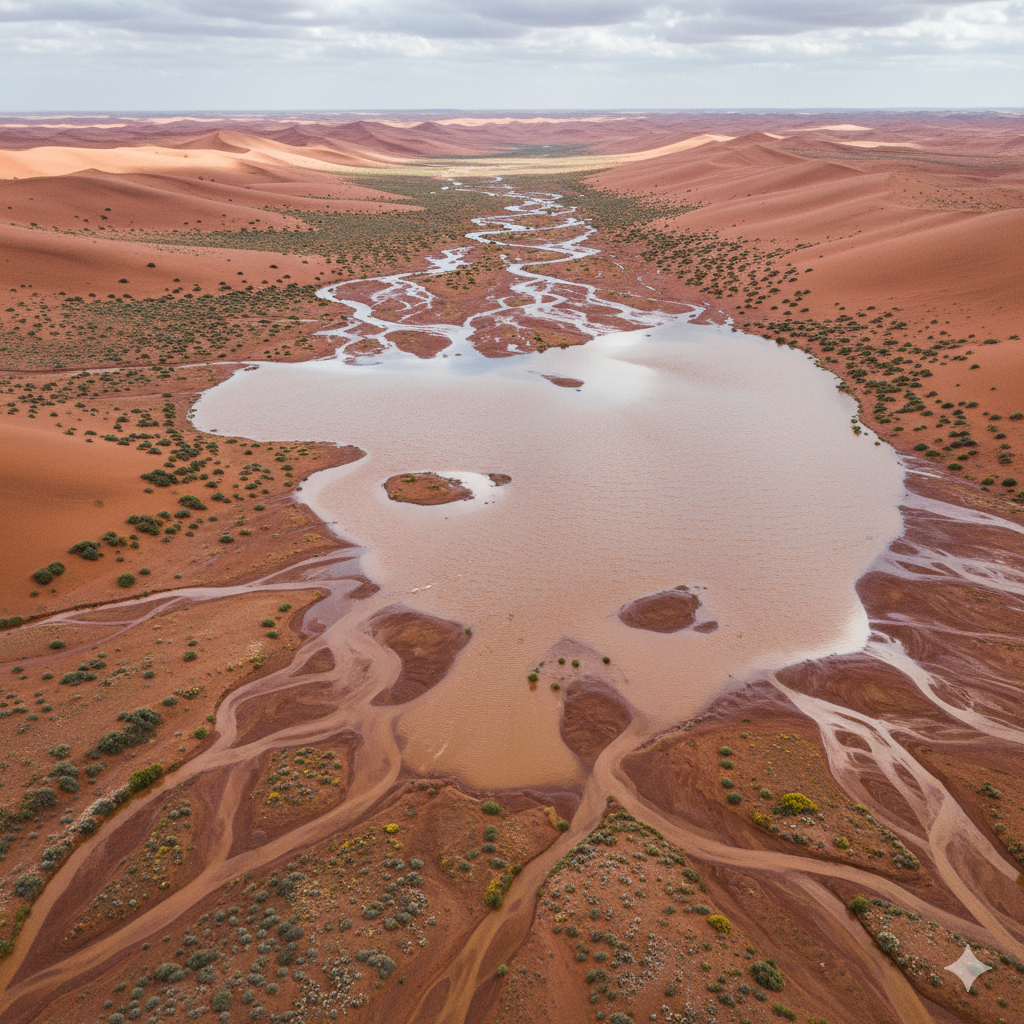
Best time to visit:
After monsoon rains or cyclonic rainfall (usually summer months, December-March for northern parts).
How to experience:
- Travel with 4WD during wet periods (roads may be impassable otherwise).
- Local guided tours are beneficial.
- Bring gear for remote travel: water, shelter, mosquito repellent.
2. Baja California, Mexico – Desert Pools in Vizcaíno Region
Along Baja’s central coast, seasonal ponds form after winter rains. Though mostly dry, some basins hold water and attract birdlife from the Pacific flyway.
What appears:
- Shorebirds, ducks, occasional flamingos.
- Native amphibians that complete life cycles quickly.
- Dragonflies and aquatic insects.
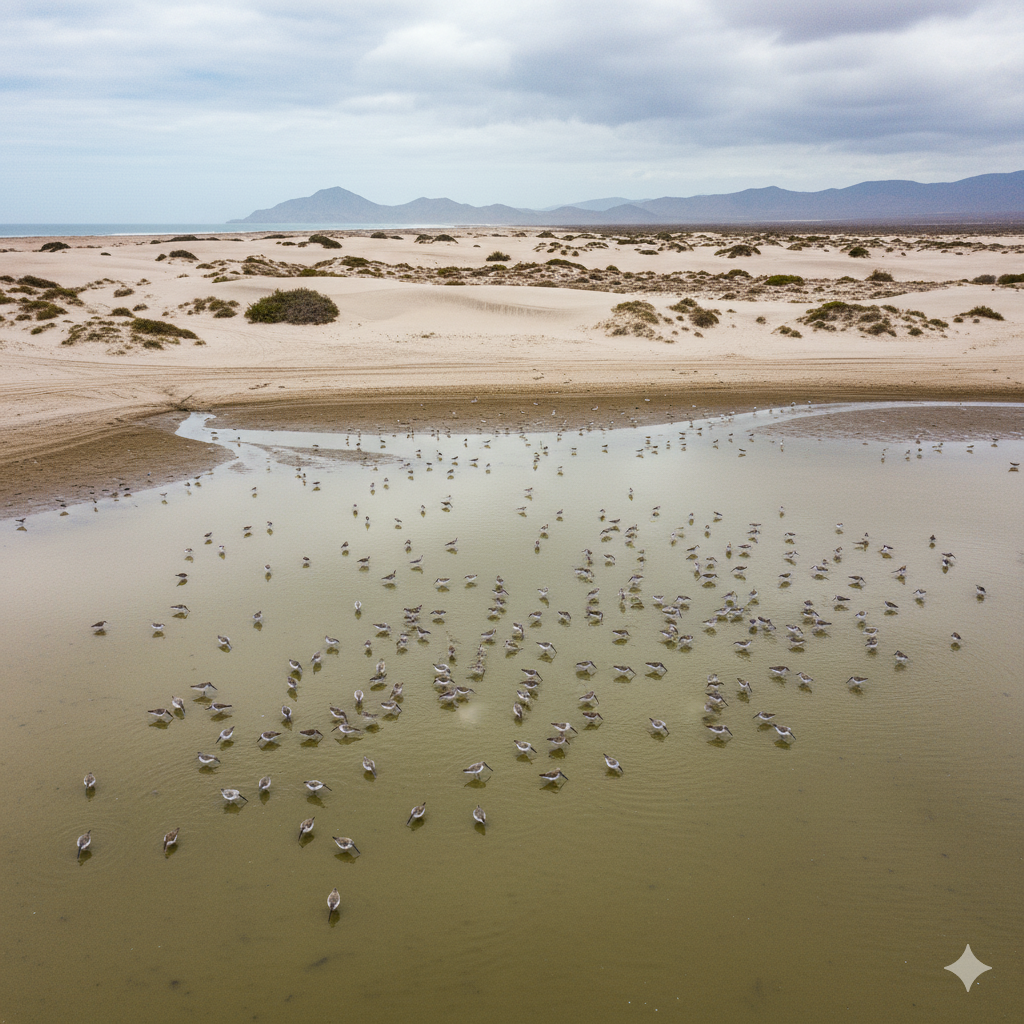
Best time to visit:
Winter to early spring (January–April) following rainy season.
3. Sahara Desert – Rain Pools in the Sahara Fringe
In regions like southern Morocco, Algeria, and parts of Chad, rare rains fill pans (known as sebkhas or gueltas), which become lifelines for desert fauna.
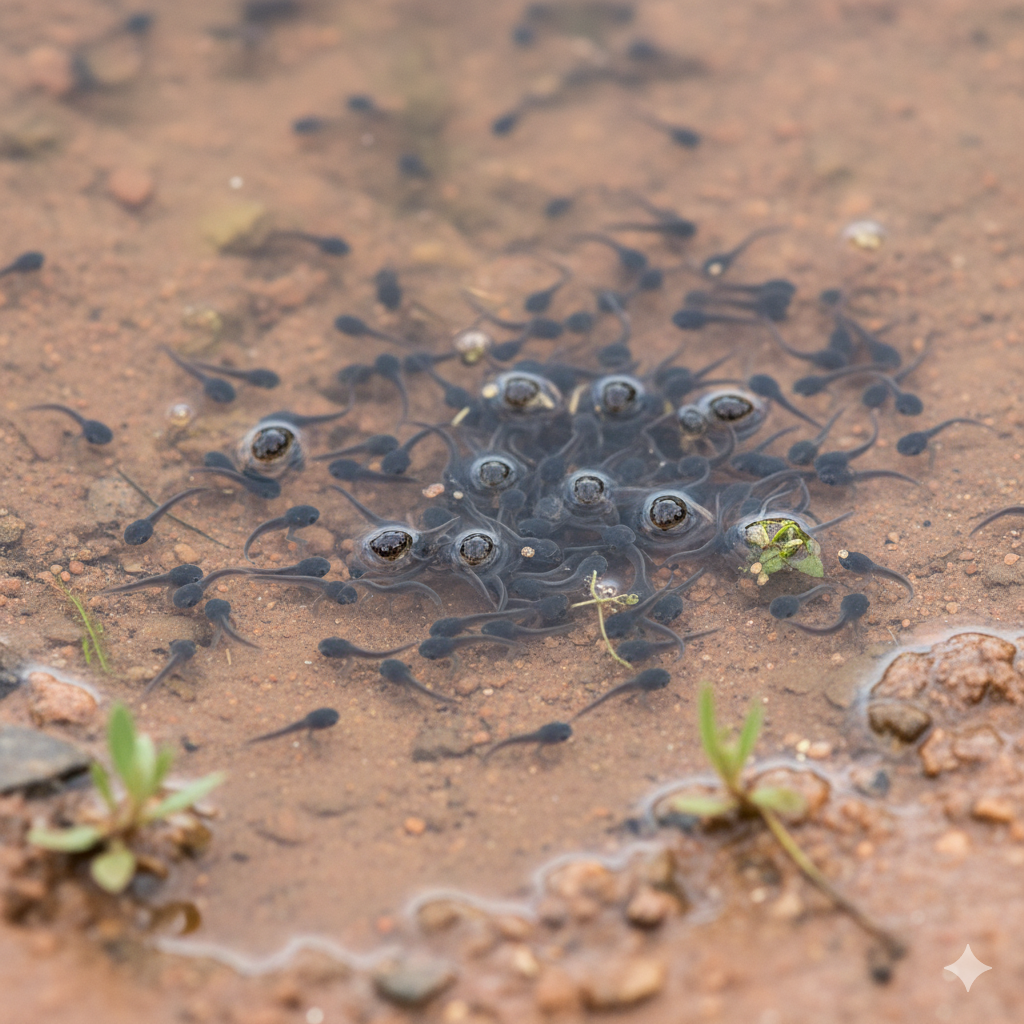
What appears:
- Migratory birds crossing Sahara, using these water sources.
- Desert frogs and aquatic invertebrates.
- Small mammals that forage along the pond margins.
Best time to visit:
Immediately after rare rain events, often unpredictable; requires local knowledge.
4. Sonoran Desert, USA/Mexico – Alamo Lake & Desert Playas
In parts of Arizona & Sonora, desert playas (flat dust basins) or ephemeral lakes fill after monsoon storms.
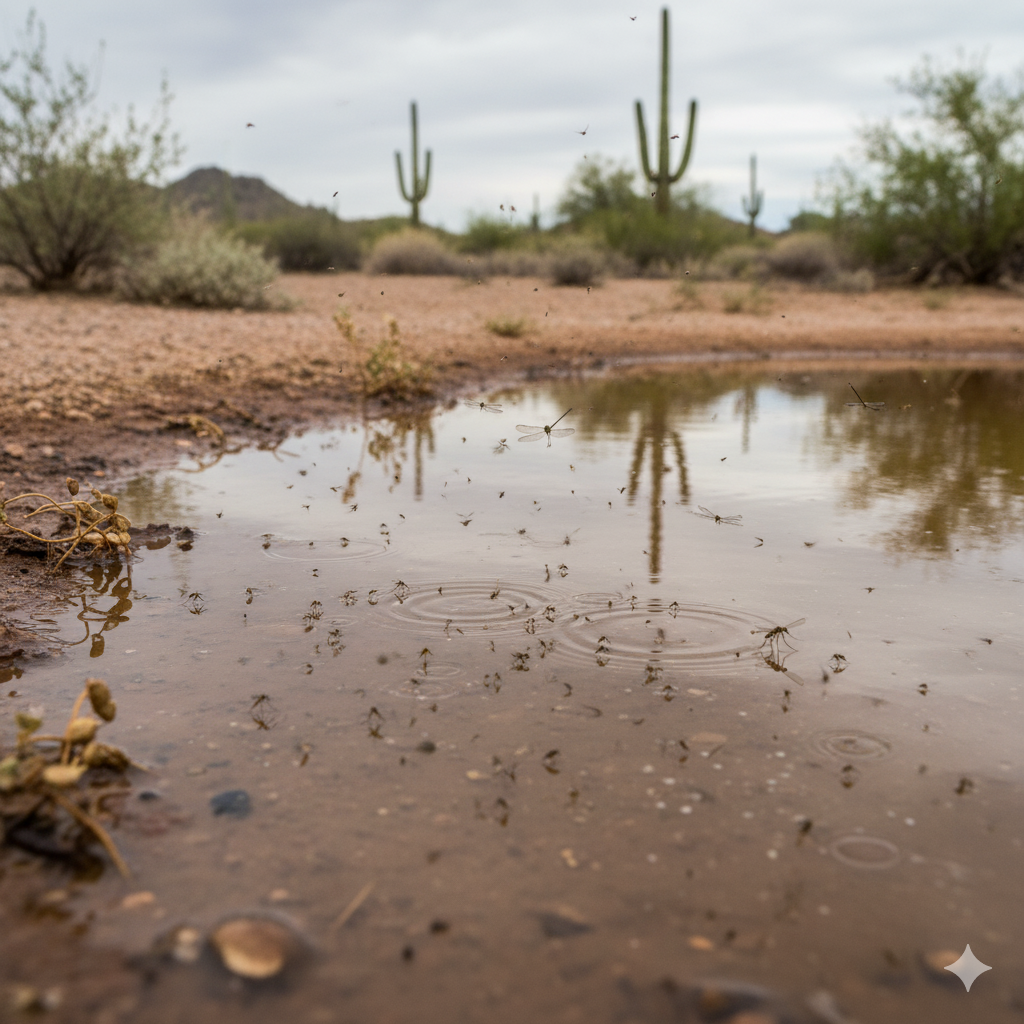
What appears:
- Desert pupfish, frogs, insects.
- Migratory birds like sandpipers, yellowlegs, sometimes herons.
- Flash-vegetation (plants sprout quickly) along pool edges.
Best time to visit:
Monsoon season (June-September) often yields pools after flash storms.
5. Atacama Desert, Chile – Altiplano Ponds
Though one of driest places on Earth, the Andean high-plains of Atacama occasionally host shallow pools after rare precipitation or snowmelt.
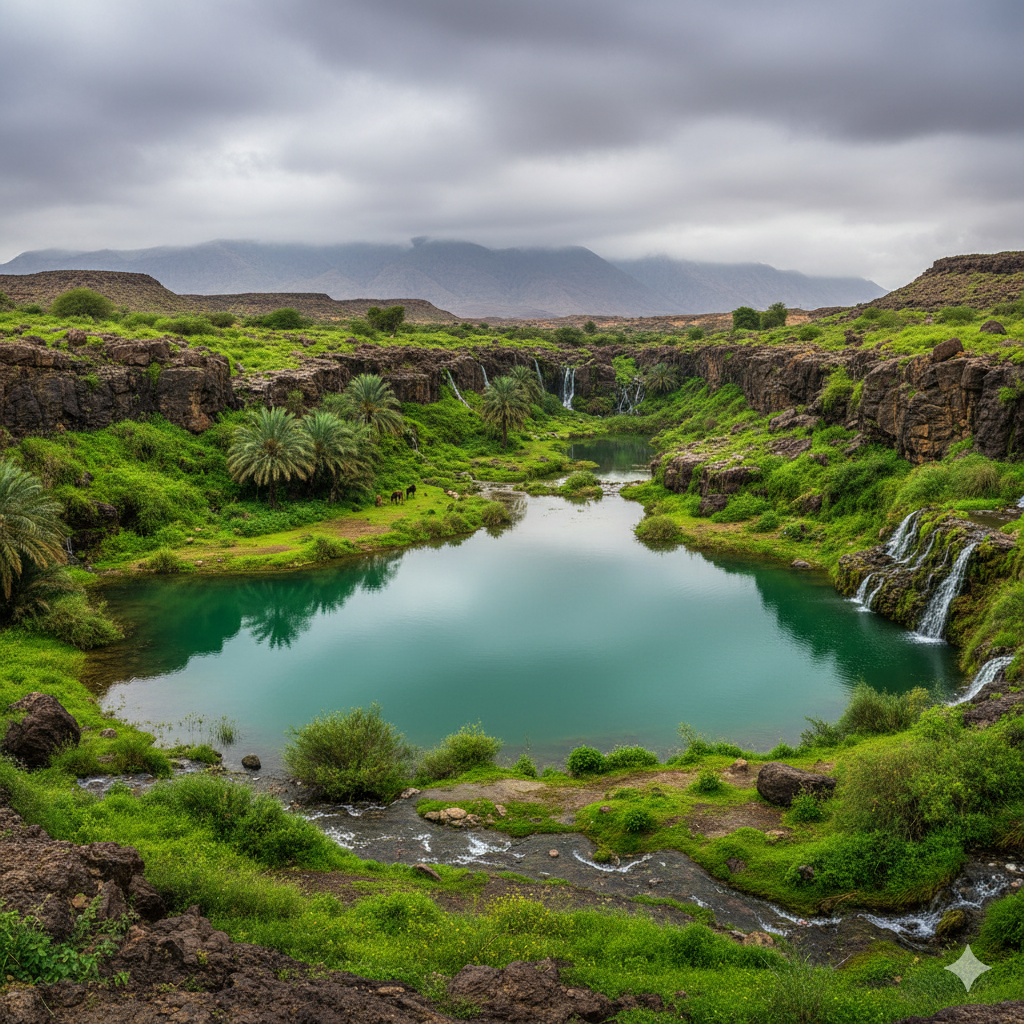
What appears:
- Flamingos (in salt lakes or briny pools) that feed on algae.
- Amphibians (in more humid microclimates).
- Insects, crustaceans adapted to extreme variation.
Best time to visit:
After winter rains or during seasonal melt (southern winter/ spring).
6. Arabian Peninsula – Dhofar, Oman Seasonal Pools
In Dhofar region of Oman, monsoon rains (the “khareef”) and occasional cyclonic storms fill lowlands and wadis, creating pools.
What appears:
- Migratory birds en route between Africa and Asia.
- Native frogs, toads that exploit temporary water.
- Reptiles and insects drawn to moisture and prey.
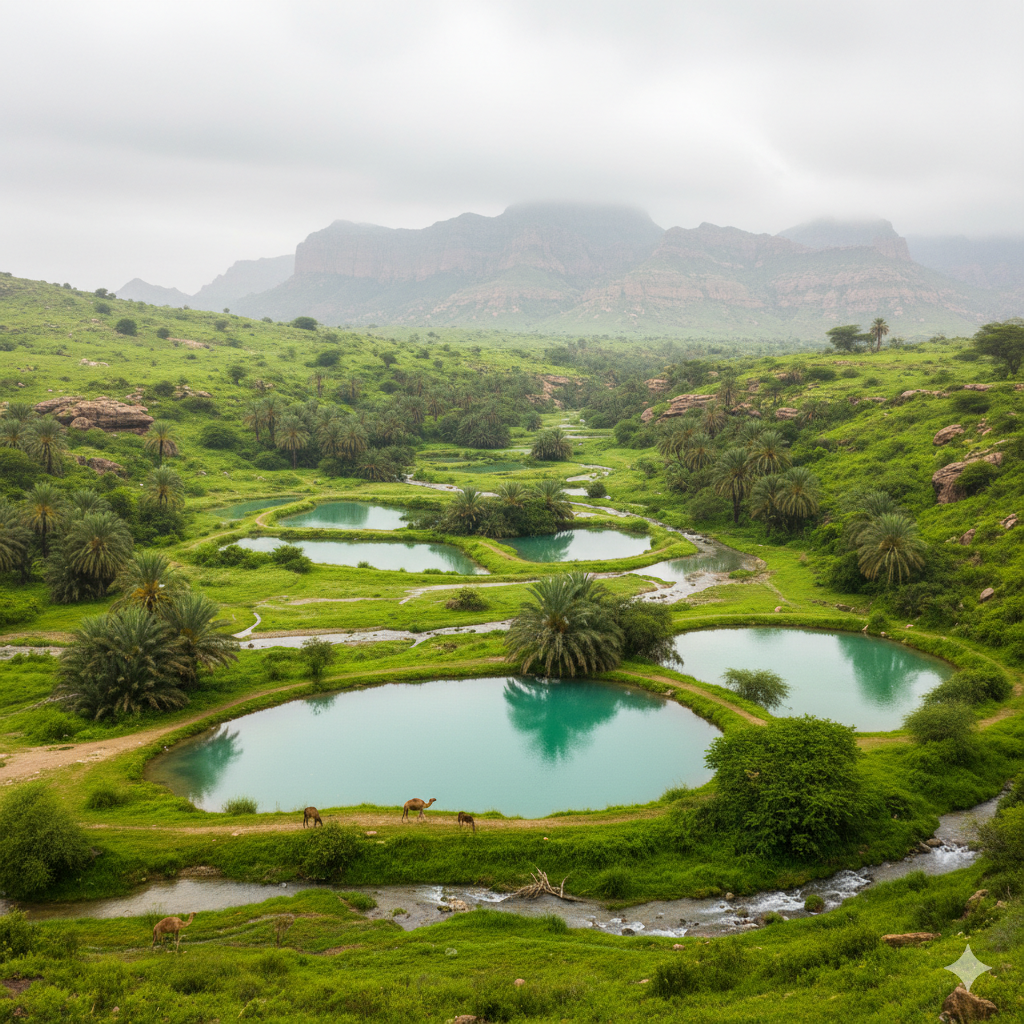
Best time to visit:
Khareef season (June-September).
7. Western Australia – Pilbara & Kimberley Ponds
The Kimberley region, Pilbara and other remote parts of Western Australia have ephemeral pools in rock formations and depressions that fill during wet season.
What appears:
- Freshwater prawns, shrimps, and crustaceans.
- Migratory waterbirds, including ibises and herons.
- Unique frog species adapted to rapid breeding cycles.
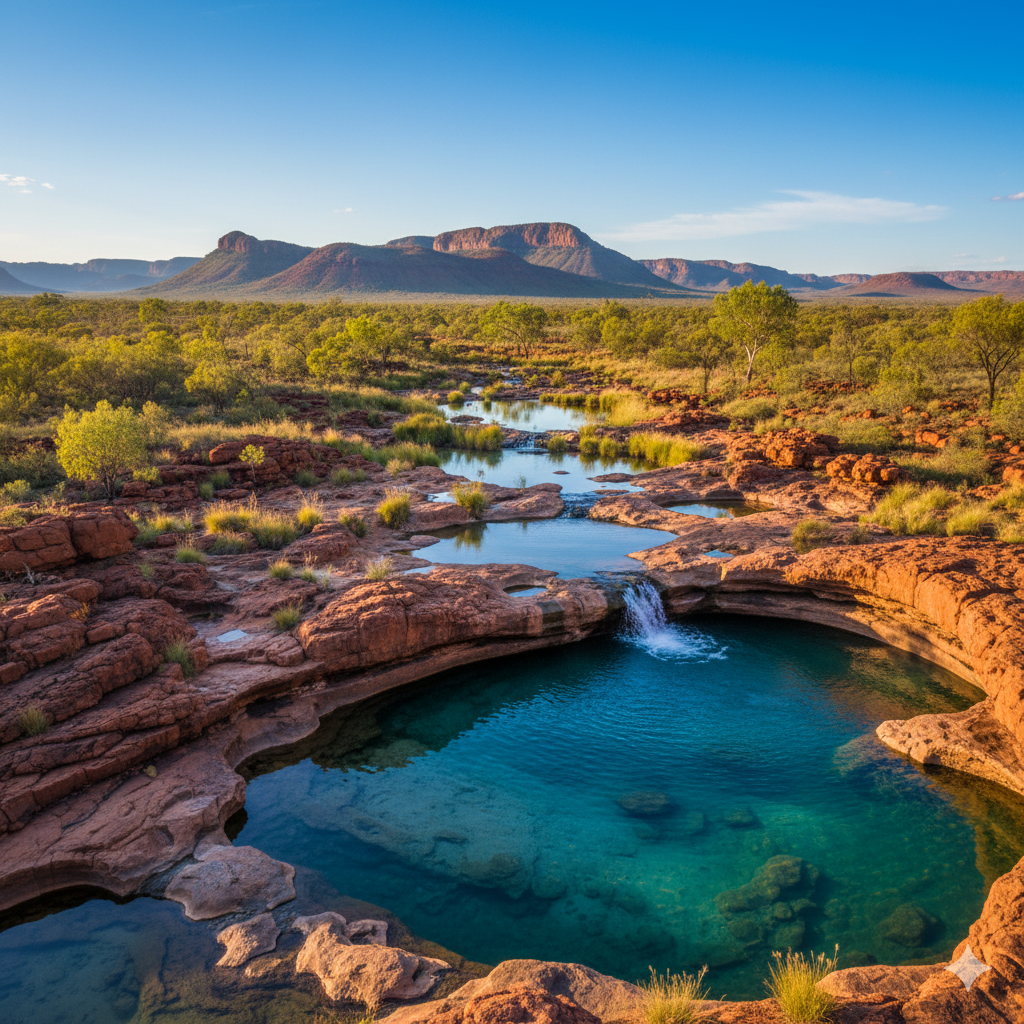
Best time to visit:
Wet season (November-April, varies); accessibility often difficult when roads are flooded.
⚙️ How Ephemeral Desert Pool Wildlife Works — Lifecycle & Adaptations
Rapid Life Cycles
- Many amphibians deposit eggs that hatch in 24-48 hours, then metamorphose rapidly before water evaporates.
- Insects like mayflies, flies, dragonflies have life stages timed to waters’ presence.
Dormancy & Survival
- Eggs or cysts that can survive dry periods in sediment (diapause) until next water arrives.
- Some species hide in burrows or shaded cracks to avoid heat and desiccation.
Migratory Behavior
- Birds know seasonal cues (rainfall patterns, landscape signals) and fly in after rain events.
- The presence of water triggers ripple effects: nesting, feeding, breeding.
Secret Beaches of Mantigue Island Travel Guide
🌿 How to Visit & Observe Ephemeral Desert Pools Respectfully
- Timing is crucial: track weather patterns/rainfall reports. Use local sources or apps for precipitation.
- Check access & safety: drying desert roads become dangerous; pools may have muddy bottoms or sudden drop offs.
- Gear: waterproof boots, insect repellent, sun protection, binoculars, camera with macro capacity.
- Leave no trace: avoid trampling vegetation, minimize disturbance; many creatures are fragile.
- Follow local regulations: some deserts are protected lands; permits may be required.
Australian Museum – Ephemeral Wetlands & Desert Pools
FAQs
Q1: What qualifies as “ephemeral desert pool wildlife”?
Wildlife that uses temporary desert pools — such as migratory birds, amphibians, insects, and plants — that depend on short-lived water bodies, only present after rare or seasonal rainfall.
Q2: How long do these pools typically last?
From a few days to several weeks, depending on temperature, evaporation rate, water volume, and drainage. Some persist longer if shaded or in impermeable soil.
Q3: Are these ecosystems fragile?
Very much so. Disturbance (foot traffic, pollution), premature draining, climate change (increasing evaporation or changing rain patterns) can severely impact them. Many species are specialized for rapid life cycles.
Q4: Can I visit them any time?
No — you must time your visit right after rains, track weather, and sometimes navigate difficult terrain. Some remote areas only accessible with guides or during certain seasons.
Q5: Do these pools exist worldwide?
Yes — deserts on nearly every continent have ephemeral pools (Australia, North America, Middle East, South America, Africa). The species composition varies greatly by region.
Traveler Advise
Ephemeral desert pools are nature’s hidden gems — transient, unpredictable, yet brimming with life in the brief moments they exist. When rain arrives after long droughts, these shallow basins become islands of biodiversity, attracting migratory birds, frogs, insects, and plants that seize the opportunity to feed, breed, and grow.
If your heart is stirred by wildlife, by the sudden transformation of barren land into living waters, then chasing these pools is an unforgettable adventure. But with that privilege comes responsibility: visit with care, leave no trace, respect the delicate lives depending on these waters.
May your journeys lead you to shawls of birds over shining desert water, to frogs dancing in claypan bottoms, and to the recognition that even the most fleeting of nature’s wonders can leave a lasting imprint.

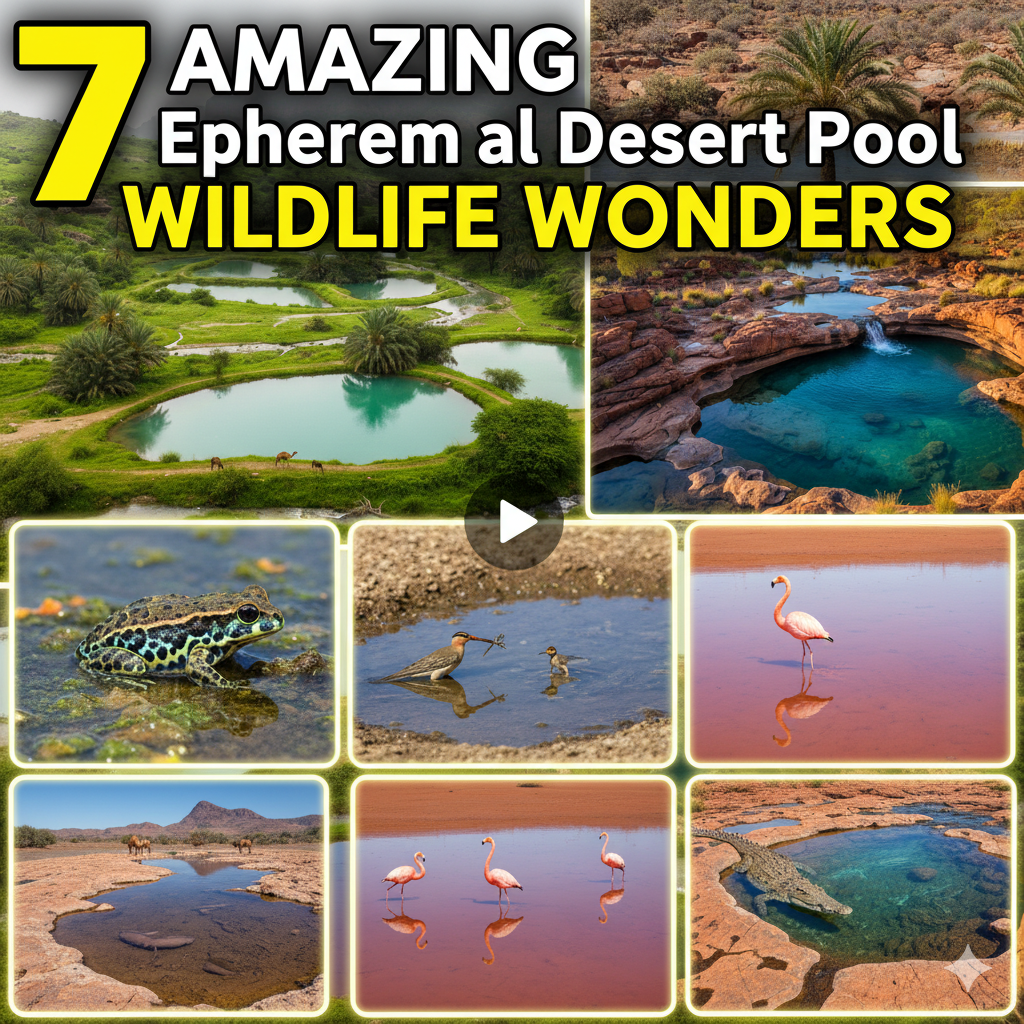

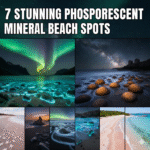
Pingback: Fishermen's Dawn Rituals 7 Inspiring Traditions Before Sailing
Pingback: ETIAS 2025 Guide Easy Application for US, UK & Canada